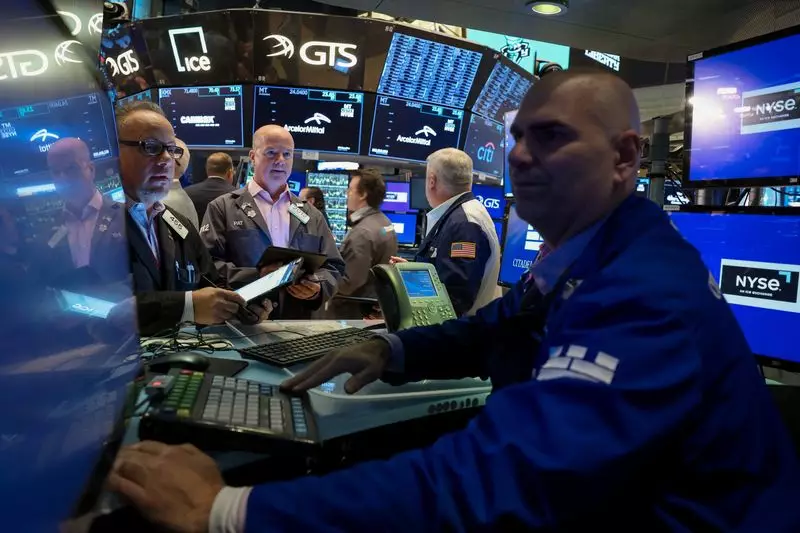As the week closed, the Nasdaq Composite experienced a notable rise, driven primarily by the performance of large-cap technology stocks. The market’s positive trajectory came amidst the anticipation of significant quarterly earnings reports from major industry players, setting the stage for potential fluctuations in market sentiment. Tesla stood out with a staggering increase of 3.36%, bouncing back from a massive 22% surge the previous day, following an optimistic sales forecast that rejuvenated investors’ spirits.
On the other hand, the broader market wasn’t as robust. The Dow Jones Industrial Average plummeted by 259.96 points, resulting in a 0.61% loss at 42,114.40, while the S&P 500 remained nearly flat at a marginal loss of 1.74 points. The contrasting performances highlight a divided market landscape, as technology stocks thrived while other sectors faltered, demonstrating the complexities that underlie investors’ decisions.
A significant factor influencing the market was the resurgence of interest in the so-called “Magnificent Seven” — a term that refers to a select group of tech giants benefiting from burgeoning enthusiasm for artificial intelligence. Brian Jacobsen, Chief Economist at Annex Wealth Management, emphasized that Tesla’s impressive numbers played a pivotal role in reigniting confidence among investors in this rally.
Additionally, Nvidia briefly claimed the title of the world’s most valuable company, dethroning Apple, highlighting the liquidity and volatility that characterize the tech sector. Such shifts not only emphasize the sector’s importance but also reflect how investor sentiment can pivot rapidly, especially in response to promising technological developments.
The rise in the yield of the benchmark 10-year Treasury note, which reached highs not seen in three months at 4.26%, cast a shadow over stock market performance earlier in the week. The bond market’s dynamics exert considerable influence on equity valuations, with rate expectations playing a critical role in shaping investor behavior. The anticipation of upcoming employment data could yield insights about the Federal Reserve’s monetary policy trajectory, thus amplifying the current market volatility.
Commentators like Arnim Holzer caution that market participants may have miscalibrated their expectations regarding the Fed’s dovish stance. The prevailing economic indicators, characterized by resilience and inflationary pressures, might not align with the easing anticipated by many observers. The ongoing uncertainty surrounding the Fed’s next moves adds a layer of complexity to an already tumultuous market environment, suggesting caution may be prudent among investors.
Sector Performance and Individual Stock Highlights
While the tech-heavy Nasdaq managed to gain traction, the performance of the Dow was mired by significant losses in financial and consumer discretionary stocks. Notably, major banks like Goldman Sachs and prominent fast-food chain McDonald’s faced sharp declines, exacerbated by specific market pressures including an E. coli outbreak and general investor profit-taking amid rising geopolitical risks.
On the flip side, Capri Holdings experienced a drastic 48.89% downturn after a U.S. judge obstructed the merger plans with Tapestry — underscoring the impact of regulatory constraints on market dynamics. Meanwhile, shares of Tapestry surged by 13.54%, demonstrating how competitive advantages can shift dramatically in reaction to corporate news.
Looking Ahead: Key Events on the Horizon
The upcoming week holds immense significance for market participants, with earnings reports from major tech companies such as Alphabet, Apple, and Microsoft on the horizon. Coupled with the release of the October nonfarm payrolls report, these events are poised to shape investors’ outlooks considerably.
Paul Eitelman from Russell Investments emphasized the critical nature of this upcoming week. The convergence of tech earnings and pivotal economic data could lead to significant volatility, as investors recalibrate their expectations in light of new information.
As the financial landscape evolves, the interplay between technology, economic indicators, and investor sentiment underscores the unpredictability that characterizes contemporary markets. Understanding these dynamics is essential for navigating the complexities of investing, particularly in a climate defined by rapid advancement and shifting economic currents.

